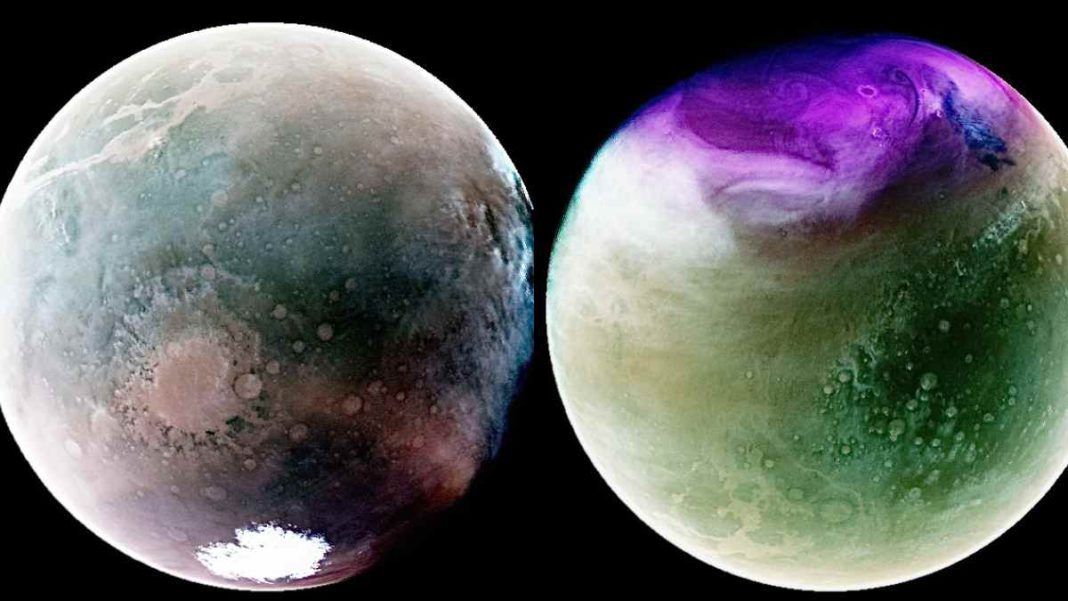UNITED STATES: NASA’s MAVEN (Mars Atmosphere and Volatile Evolution) spacecraft has delivered breathtaking ultraviolet images of Mars, offering scientists a unique glimpse into the planet’s atmosphere and surface characteristics.
These mesmerizing images, captured in 2022 and 2023 at different points along Mars’ elliptical orbit around the Sun, were made possible by MAVEN’s Imaging Ultraviolet Spectrograph (IUVS) instrument.
By utilizing ultraviolet wavelengths, researchers gain valuable insights into the Martian atmosphere and unlock extraordinary details of the planet’s surface features.
The IUVS instrument, which measures wavelengths ranging from 110 to 340 nanometres outside the visible spectrum, provides a window into the unseen aspects of Mars.
To enhance interpretability for the human eye, the images are presented in false color. The varying brightness levels of three ultraviolet wavelength ranges are assigned to the colors red, green, and blue, offering a visually captivating representation of the data.
In this color scheme, atmospheric ozone appears as a striking shade of purple, while clouds and hazes present themselves in ethereal tones of white or blue. The Martian surface takes on hues of tan or green, skillfully optimized to accentuate contrast and reveal intricate details.
The initial image, captured in July 2022 during Mars’ southern hemisphere summer season, showcases the awe-inspiring Argyre Basin, one of the planet’s deepest craters, veiled in atmospheric haze.
Additionally, the image exhibits the majestic deep canyons of Valles Marineris, adorned with wisps of clouds. Notably, the southern polar ice cap is visible, gradually diminishing due to the relative warmth of the summer season.
The second image, taken in January 2023, portrays Mars’ northern hemisphere subsequent to its farthest point from the Sun in its orbit. The dynamic seasonal changes in the northern polar region manifest as an abundance of striking white clouds.
Within this image, the iconic Valles Marineris canyons emerge once again, alongside numerous craters that bear witness to the planet’s intriguing geological history.
The MAVEN mission, launched in November 2013 and successfully entering Mars’ orbit in September 2014, endeavors to explore the planet’s upper atmosphere, ionosphere, and interactions with the Sun and solar wind.
By comprehending the loss of the Martian atmosphere to space, scientists aim to unravel the mysteries of Mars’ atmospheric evolution, climate patterns, the existence of liquid water, and the potential habitability of the planet.
These ultraviolet images captured by MAVEN’s IUVS instrument mark a significant milestone in our understanding of Mars. By peering through this unique lens, scientists have unveiled a mesmerizing world of vibrant colors, unveiling the planet’s atmospheric and surface secrets.
As MAVEN continues its mission, we can expect further revelations that will deepen our knowledge of the Red Planet and its place in the solar system.
Also Read: Fatal Titan Submersible Incident Sparks Inquiry by Canadian Safety Regulators



